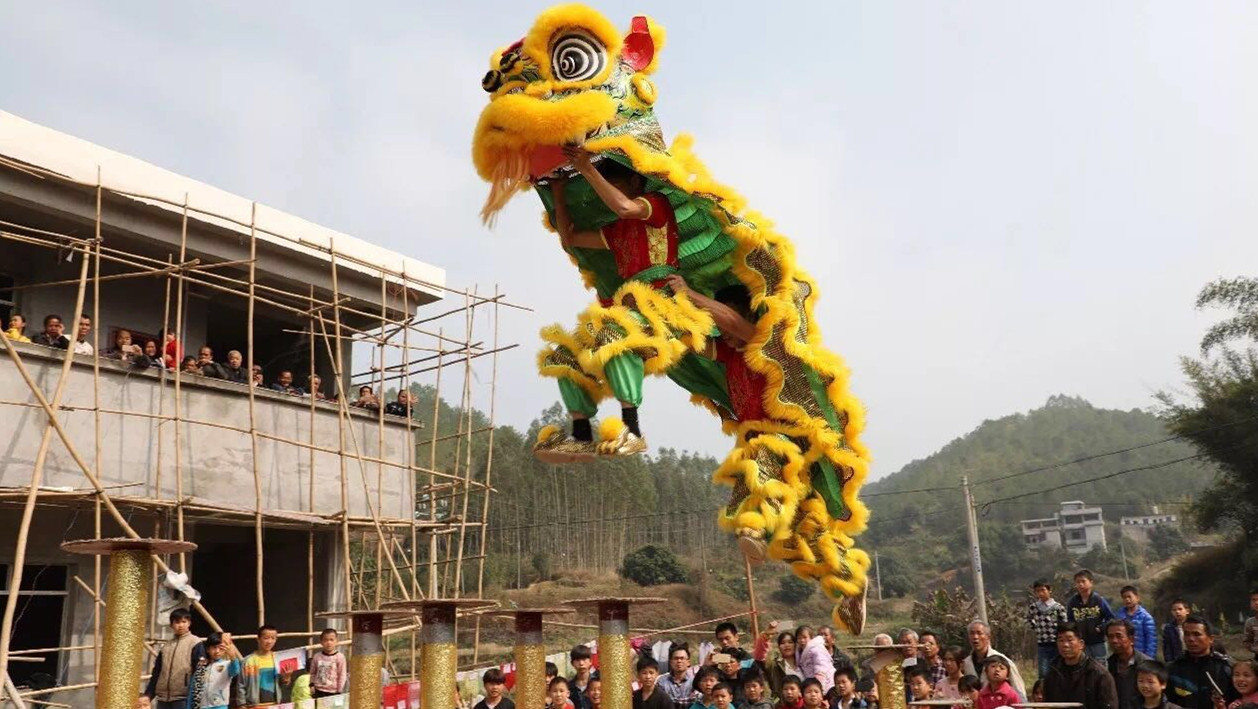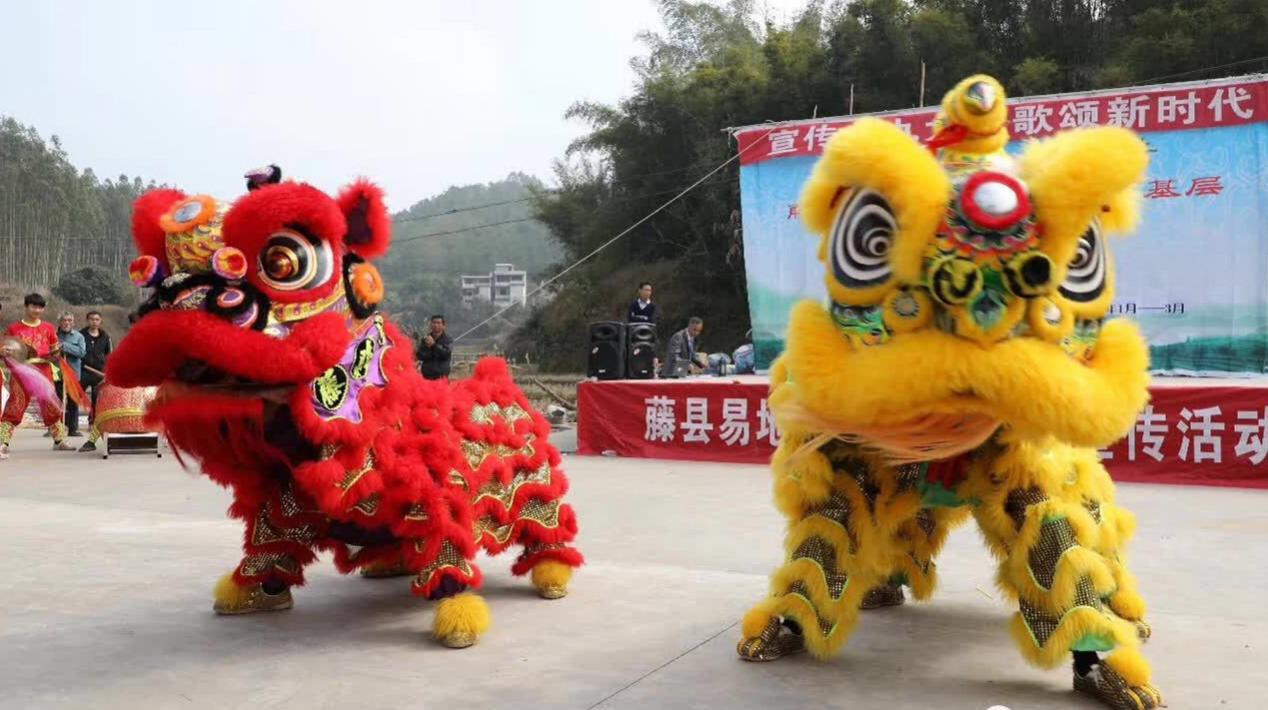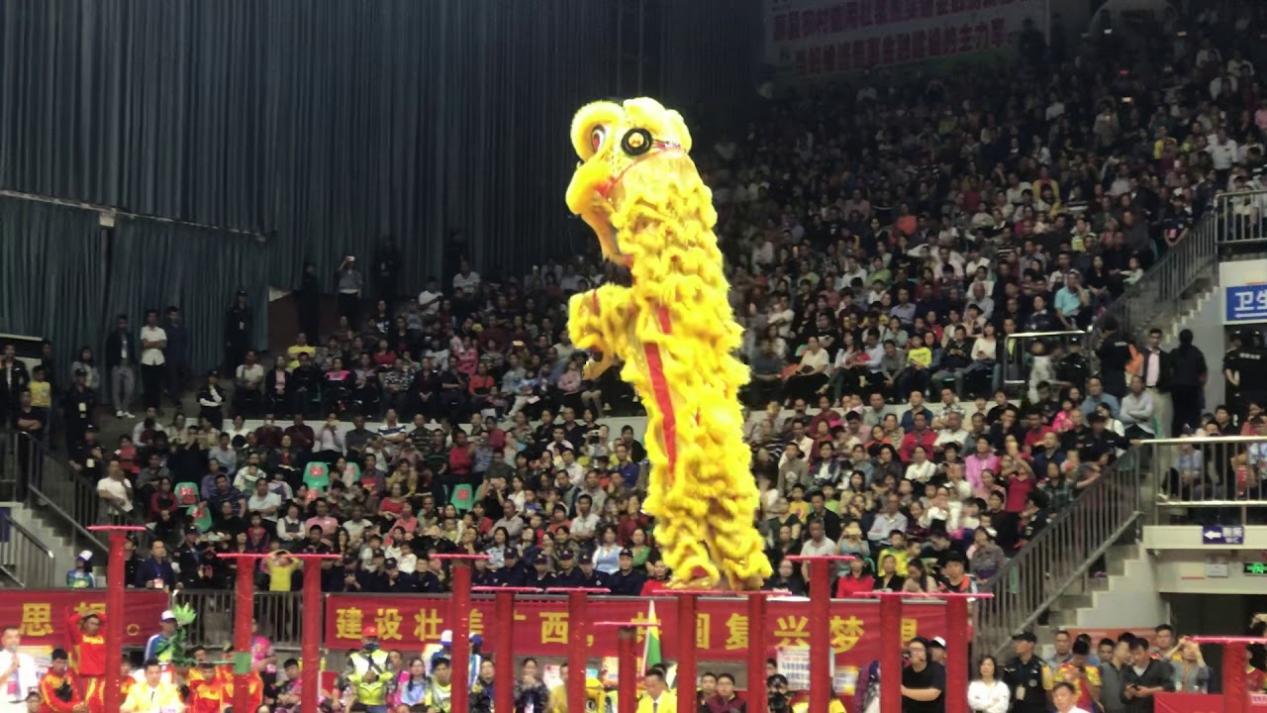

By Chen Zhiying
Traditionally, the Chinese love sports as an essential method for keeping fit as well as for entertainment, like the dragon-boat races during the Duanwu Festival, flying kites at the Qingming Festival, and climbing mountains during the Double-ninth Festival. As a country with diverse cultural traditions passed down from one generation to another over a long history, China has developed a variety of sports, among which lion dance combined with martial arts and acrobatics may be said to be the superb skills of China. In the many branches of lion dance in China, the Tengxian lion dance earns a good name and once was reputed as the “Lion King in the East” for its excellent performing skills.

Origins of the lion dance
Different opinions exist on the origins of lion dance. A more reliable one is that in Chinese culture, lion is just a mythical animal like dragon and unicorn. China has no lions. In the Han Dynasty (202 BC-220 AD), a small number of real lions were first introduced from the Western Regions via the famous Silk Road. Rulers in what is today’s Iran and Afghanistan sent lions to Chinese emperors as gifts in order to get the right to trade with Silk Road merchants. At that time, people started to imitate lion's appearance and movements, which developed into lion dance in the Three Kingdoms period (220-280 AD). During the Tang Dynasty (716-907 AD), lion dance became one of the large-scale Palace dance performances, reaching its peak. In the poem Hsi Liang Chi by the famous Tang poet Bai Juyi, from the lines describing the lion dance we can know the lion dance then is quite similar to what we see today.
Besides historical records, mythologies also abound about the dance’s emergence. One of them goes like this: in ancient times, a fierce creature with sharp teeth and claws called ‘Nien’ appeared in China and horrified and ate men and animals. Neither the fox nor the tiger could fight with it and in despair, people asked the lion for help. The lion shook his mane, rushed towards Nien, and wounded it. Nien hurried away with the tail between its legs but announced to return for taking revenge. A year later Nien did return. This time the lion couldn’t help the people since he was also busy guarding the emperor’s gate, so the villagers decided to do the job themselves. Out of bamboo and cloth, they produced an image of the lion. Two men crawled inside it and approached Nien. The ‘lion’ pranced and roared and the monster fled away again. Since then, people knew the way to scare away Nien and the tradition passed down from one generation to generation to become today’s lion dance. This is the reason why on the eve of the Chinese New Year, there are always lion dance performances. They are frightening evils away for another year.

Breathtaking techniques in Tengxian lion dance
Tengxian county has long been known as the “hometown of lion dance”. According to historical records, the Tengxian lion dance was formed in the Tang Dynasty, matured and flourished from the Qianlong period to the early days of the founding of China, and innovated in the contemporary era. The performance of “cai qing”, literally meaning “plucking the green”, is the essence of the Tengxian lion dance. It mainly focuses on the skills on the ground. Local people usually hang either green lettuce or red envelopes on a pole or placed them on a table to test the wisdom and ability of the lion. The dancer has to express moods such as joy, anger, drunkenness, fierceness, and surprise and performs the basic movements like walking, jumping, rolling, climbing, etc., before plucking the green. This is the so-called performance of “cai qing”. Another one is performed on the high poles. It is a kind of competitive lion dance developed and innovated from the “cai qing”. With specially-ordered pole arrays, movement made from pillar to pillar in the sky, and accompanied by the sound of drums, cymbals, and gongs, the lion dance is mind-blowing. However, to master such superb skill is not easy work. It takes years of monotonous training and requires performers’ courage, persistence, and diligent practice.
In 2004, at the 6th Genting World Lion Dance Championship, the Tengxian lion dance troupe took the crown and gained the reputation of “Lion King in the East”. In 2011, the art was also listed as a national intangible cultural heritage, with a long history and auspicious meanings contained as well as the combination of music and kung fu.

Like many traditional art forms in China, the Tengxian lion dance also faces a decline in modern days. How to revive the old cultural heritages is what we have to consider.
Tips:
桂ICP备14000177号 Copyright@2006-2013 Guangxi China-ASEAN Panorama Magazine Agency Co., Ltd. All Rights Reserved